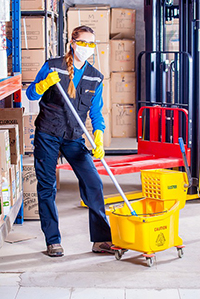 It’s no longer enough to choose an insurance company simply because they offer what appears to be the best coverage or lowest rates. You also have to know the financial security of the company especially in these challenging economic times when even the largest companies might be teetering on the edge of insolvency.
It’s no longer enough to choose an insurance company simply because they offer what appears to be the best coverage or lowest rates. You also have to know the financial security of the company especially in these challenging economic times when even the largest companies might be teetering on the edge of insolvency.
Additionally, you want to know something about the company’s track record when it comes to paying claims and overall customer satisfaction. Not all insurance companies are the same and you should take a hard look at your prospective insurer before handing over a big premium check.
How can you find this information? Well, it’s easier than you think because there are several major companies that rate insurance companies. Each offers a detailed rating service and most of these services are free. The rating system for each of these rating companies is based on a letter grade system such as “AAA”, through “NR.” However, you should note that there are both subtle and significant differences in the letter grade system. A “C” rating might mean an average score for one rating company but might also suggest the insurance company is experiencing significant financial challenges with a different insurance rating company. Make sure you fully understand the rating system for each of the companies before jumping to an erroneous conclusion.
Some rating companies only rate the top 200 insurers, while others offer more comprehensive data. Here is a brief summary of the major companies which rate insurance companies.
A.M. Best – www.ambest.com
This rating agency is the only one which specializes in banking and insurance companies, reinsurers and covers the total insurance market spectrum including international markets such as the U.K and Canada. Also offers a comprehensive article base and in depth commentary.
Fitch Inc. – www.fitchratings.com
Provides a global rating service on insurance products through combining both local and international expertise on contemporary insurance issues and trends. Also offers a monthly newsletter dealing with specific insurance issues called “Insurance Insights.”
Moody’s Investor Services – www.moodys.com
You have to register to log in with this company before you can access their info. Covers title insurers, life, mortgage and property and casualty. Mainly focused on the financial health and outlook of insurance companies and overall realm of the financial market.
Standard & Poor’s – www.standardpoors.com
Must be a subscriber. Offers international rating services on property and casualty, life, annuities, health, title, mortgage, bond and reinsurance. Rating services include link market solutions and both the derivative product and financial subsidiaries.














